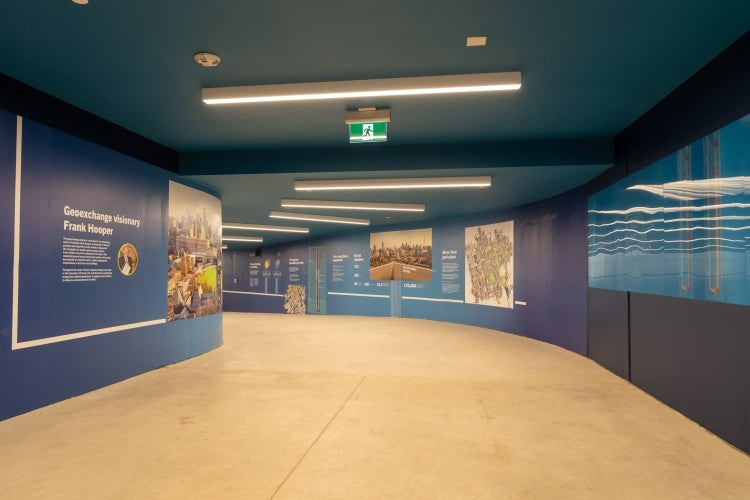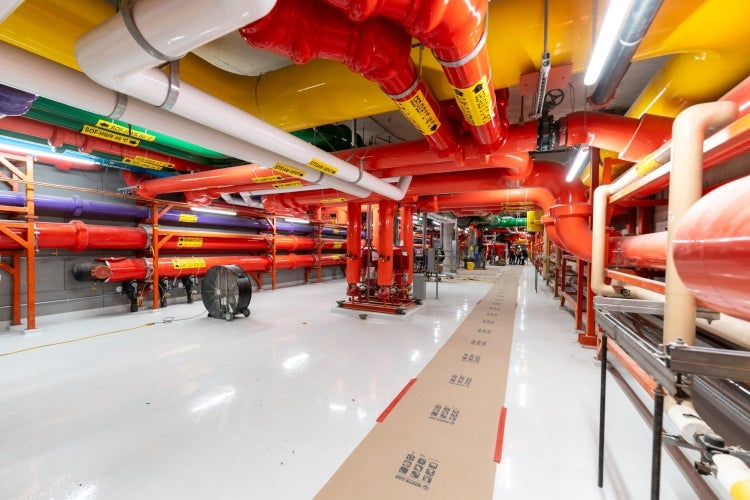This marks the latest phase of Project Leap, the university's ambitious plan to reduce greenhouse gas (GHG) emissions at St. George by over 50 per cent by the end of 2027.
"The geoexchange was built as part of the Landmark Project, but through Project Leap we are expanding its reach, adding new connections and heat pumps that will dramatically increase its capacity," says Scott Hendershot, senior manager, sustainability at U of T Facilities & Services. "This will unlock its full storage capacity, equivalent to the energy from 250,000 electric vehicle batteries."

The museum-style display outside of the Landmark parking garage allows visitors to learn more about the geoexchange system (photo by Donglin Que)
Based in part on work by the late Frank Hooper, a professor emeritus of mechanical and industrial engineering in the Faculty of Applied Science & Engineering, the geoexchange consists of 372 U-shaped pipes, each reaching a depth of 250 metres - about half the height of the CN Tower. The system collects excess heat from campus buildings during the summer via U of T's heating and cooling network and stores it beneath Front Campus. In winter, that stored heat is returned to warm the buildings, reducing reliance on fossil fuels.

The pipes that make up the underground geoexchange system are colour-coded depending on their function (photo by Donglin Que)
Currently, the Medical Sciences Building, FitzGerald Building, Leslie L. Dan Pharmacy Building and theTerrence Donnelly Centre for Cellular and Biomolecular Research are being connected to the geoexchange. Once complete, a total of 33 campus buildings will be integrated. Combined with building heat recovery efforts, heat pumps and upgrades to the university's central steam plant, this is expected to reduce the campus's reliance on natural gas by more than 25 per cent, equivalent to a GHG emissions reduction of 17,000 tonnes - a major step toward meeting U of T's climate goals.
"This is a wonderful demonstration of how sustainable technologies can be integrated into a historic campus," says Ron Saporta, chief operating officer, property services and sustainability. "Alongside work to switch from natural gas to electric heating systems and upgrade lighting in 38 buildings, we are on track to become a climate positive campus before 2050."
Construction is expected to be completed this fall, with the full geoexchange system coming online in the spring.












